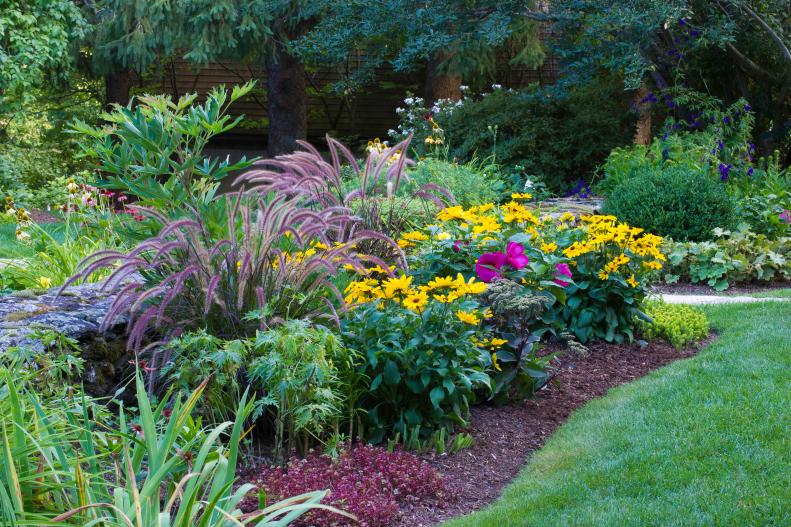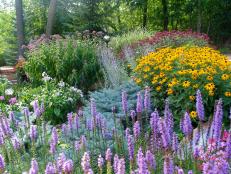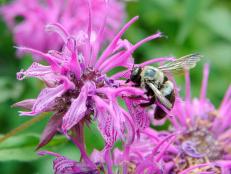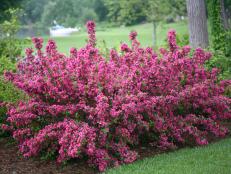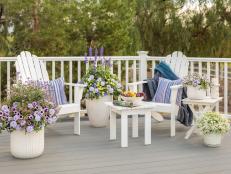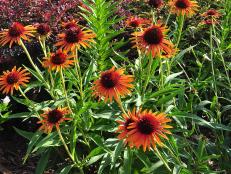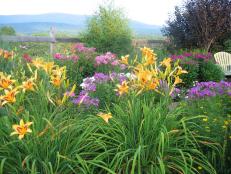Our Favorite Perennial Flowers for Full Sun
All flowers need light, but some can't take long hours of direct sun, especially when the temperatures rise or the weather turns dry. But when you grow sun-loving perennials, you can have flowers with staggered bloom times for season-long color, and you won't have to worry about watching them wilt or die in the heat of the day.
This border combines purple fountain grass, hardy hibiscus, black-eyed Susans and other perennial beauties. They thrive in full sun, which means six or more hours of sun each day. If you're short on shade in your garden, look for the best flowers for pots in full sun and enjoy them on a sunny deck or patio. For more color and texture, add some heat-proof annuals or flowering shrubs for sun. Although all of these crave sunshine, don't forget to water them as needed. Read on to find more of the best plants for sun.






